(14693 products available)





































































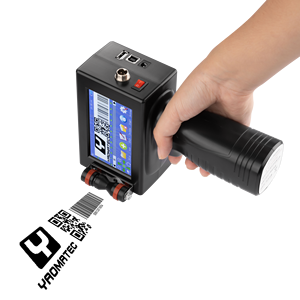








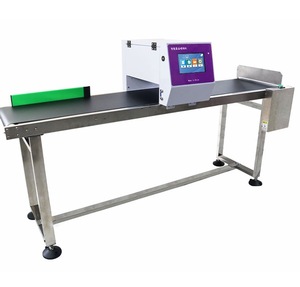







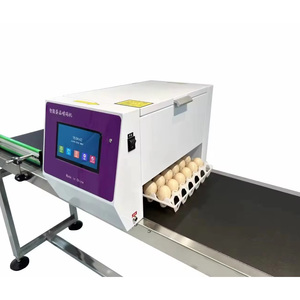































































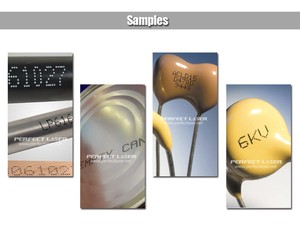





































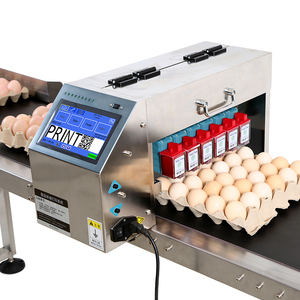











Industrial inkjet printers come into marking machines in diverse ranges capable of creating unique printing solutions for various business applications. Each of these machines offers unique benefits depending on coding and marking necessities. Here is a rundown of the major kinds and their characteristics:
Continuous Inkjet (CIJ) Machines
Continuous inkjet marking machines are meant to enhance productivity, and this is why they are mostly employed in heavy industrial settings. They operate by circulating ink and utilizing an electromagnetic field to eject droplets on surfaces. They are ideal for high production since they do not need to stop for ink replacement. They are also versatile, meaning they work well on smooth and uneven surfaces. CIJ machines are applied for printing on such items as glass containers, plastic and metal parts, and food packaging.
Drop-On-Demand (DOD) Machines
Drop-on-demand machines selectively eject ink droplets through a highly pressurized system to form letters, logos, or any other desired mark. This selectivity allows efficient ink use, producing high-quality marks. DOD printers are versatile since they apply to porous and non-porous surfaces. They suit varying inks depending on materials or industries. Common applications include cardboard cartons, wooden pallets, and paper products packaging.
Thermal Inkjet (TIJ) Machines
These machines are mainly used for high-resolution printing. They work by heating ink in the droplet chamber to create a bubble that forces ink out through microscopic nozzles. Due to this capability, Thermal Inkjet machines are used for high-quality, detailed printing. These machines are mostly suitable for such applications as printing on labels, such plastic or glass, and packaging materials.
Piezoelectric Inkjet Printers
These printers utilize piezoelectric crystals that generate pressure in the ink chamber to eject ink, giving it a highly precise control over droplet formation. Due to this advantage, Picasso printers operate various inks, including environmentally friendly and UV-curable types.
Since pressure, not heat, is used to control the piezoelectric nozzles, these printers work on temperature-sensitive substrates, thus making them ideal for such industries as electronics and cosmetics.
Inkjet marking machines enjoy great popularity across several industries to satisfy their uniquely demanding marking and coding needs. In addition to versatility in application and ability to mark fast and accurately, these machines are a preferred choice for:
Packaging Industry
Inkjet marking machines find great application in this industry to print variable data such as expiration dates, batch numbers, and barcodes on different packages. Cij machines suit the needs of high-speed printing required for flexible packaging materials, while DOD machines also mark on rigid packaging such as boxes. Inkjet ensures that information remains legible and can also be made attractive without smudging or fading, especially on surfaces like plastic and paper.
Manufacturing Industry
Machine parts undergo marking via pneumatic inkjet printing with codes and labels that help tracing and identification. For example, CIJ printers can handle large production volumes for metal machined parts, whereas thermal inkjet printers provide high-precision markings for electronic components. Inkjet technology reduces dusting on powder metallurgy parts, thus increasing their reliability.
Beverage Production
In beverage production, machines are crucial in printing expiration dates, bottle numbers, and other relevant information on containers. Continuous inkjet (CIJ) printers are applied for high-speed printing on bottle and can-making lines, whereas drop-on-demand (DOD) printers mark labels or cartons off the line.
Pharmaceuticals and Cosmetics
In such highly regulated industries as pharmaceuticals and cosmetics, machines are used for quality printing on labels and packs, including necessary but unchanging information like dosage instructions and serial numbers. These machines are mostly favored because errors can be variable data printed and compliance with regulations kept. Piezoelectric printers that provide high-resolution and precision marks are perfect for small product markings.
Logistics and Transportation
In this industry, inkjet printers are employed to create barcodes and shipping labels on boxes, pallets, and other containers. Large-volume equipment, such as such coding and marking machines as CIJ and DOD, can print on various substrate surfaces quickly without loss of efficiency. The inkjet technology ensures quick drying of the prints and clarity, which makes scanning easy to enable accurate tracking of shipments.
An inkjet marking machine is designed for high-speed, high-volume industrial use and makes variable printing in unique applications possible. Some of the critical features that mark out an inkjet marking machine from conventional printers are the following:
High-Speed Operation
Inkjet marking machines are designed to maximize production speeds in industrial settings. Their continuous and drop-on-demand technologies enable fast printing of up to 300 meters per minute, depending on the application. Such a high speed is particularly advantageous to industries such as manufacturing and packaging that need to do marked product turnover incessantly. The machines help limit bottlenecks on assembly lines by providing efficient marking and coding.
Versatility in Materials and Surfaces
Most inkjet marking machines can address varying materials ranging from cardboard, wood, glass, and plastic to metal. Continuous inkjet printers, for instance, are popularly used for smooth surfaces like glass and plastic, while drop-on-demand printers suit irregular surfaces, for instance, wooden pallets. This versatility makes them valuable across many industries, including manufacturing, logistics, and packaging. Industrial inkjets print on porous and non-porous surfaces, guaranteeing marked readability regardless of the material treated.
Integration with Production Lines
Inkjet marking machines easily integrate with existing production lines. Their line-synchronization capability with other machinery ensures seamless operation with the latter during automatic coding of the incoming products. In addition, these machines are designed to work with sensors that trigger marking as the product passes. This integration maintains high-efficiency levels in the assembly line, with no need for extra steps.
Customization and Variable Data Printing
Inkjet marking machines allow in-setting product information such as barcodes, serial numbers, QR codes, and promotional details. These machines are very useful in industries such as packaging and labels where they require distinct sets of information for each item to satisfy market demands. Such flexibility eliminates the need to change ink or insets new type since the data to be printed is adjustable via software.
Quick-Drying Inks
Most machines have inks that easily dry to ensure prints do not smudge during handling or packing. However, the drying speed of the ink depends on the ink type and the surface marked. For example, CIJ printers have fast-drying solvent-based inks suitable for non-porous surfaces. On the other hand, DOD printers have quick-drying water-based inks ideal for porous surfaces like cardboard and paper.
There are several factors to consider when purchasing inkjet printers for industrial customers. The following are some of the most important aspects:
Technology and Application
It is important to select an appropriate printing technology according to the specific applications required for the machine. Continuous inkjet technology is ideal for those high-speed jobs requiring marks on non-porous surfaces, like packaging and bottling in the beverage industry. On the other hand, drop-on-demand technology would be more suitable for irregular or porous substrates. Understanding operational requirements guarantees that the chosen machine is effective in executing the intended tasks.
Substrate Compatibility
Different types of inkjet marking machines work best with different substrates. Some machines will mark only irregular surfaces like wood or metal; others will mark all kinds of substrates, from paper and cardboard to plastic and metal. Knowing what inkjet marking machines will be marking at the customer's location will help select a compatible machine.
Print Quality and Speed
Another consideration when choosing an inkjet marking machine is balancing print quality and speed for customers' operational needs. Although some clients might need machines with very high print resolution to cater to fine details of marks, such clients might require longer production times. Other clients, like those in the packaging or manufacturing industries, more often than not, will require high-speed machines that can make quickibles to ensure that bottlenecks do not form in their production lines.
Ink Options and Costs
Remarking machines will use different kinds of inks, each with its advantages and disadvantages. While some inks are more environmentally friendly than others, they can also be less durable and have a non-permanent effect. One way to cut costs is to get a machine that uses cost-effective inks and requires low running costs so that operating an ink marking machine will not become burdensome in the long run.
Integration with Existing Systems
The marking machine should be integrated easily into the customer's current production line. For customers who run automated assemblies, it would be ideal to use machines with line-synchronization capabilities. Customers with sensor-triggered systems will find synchronization with their existing machines important for seamless working.
A1: Most substrates undergo permanent marking in industrial environments as long as the right type of ink is used with the help of an appropriate inkjet marking machine. Most of these inks are specially formulated to become resistant to various elements in their respective environments.
A2: There are tough varnishes, solvents, and UV rays in the environment to which the inks on an inkjet marking machine are resistant. Thus, industrial-grade inks such as these are formulated with strong chemical components that resist smudging, running, and fading for an extended period, even under harsh conditions.
A3: Standard marking machines are equipped with drop-on-demand technology, which efficiently applies ink to irregular substrates. They were specially designed to handle all surface types, be they smooth or textured, ensuring good ink adhesion regardless of the surface shape.
A4: Regularly scheduled maintenance completes the various ways of ensuring the smooth operation of industrial inkjet machines. This includes inspection of the printhead and cleaning of the nozzles, checks for the inks and their supplies, and occasional lubrication of the machine and its components. It will reduce marking inconsistencies by cleaning printheads, which is necessary for avoiding clogs from dry ink.
A5: They will permanently mark items in a way that does not wash off or become easily removed. Provided the right ink is selected for the substrate, permanent inkjet marking can be favorably employed in various industries for applications requiring permanent compliance with codes such as barcodes or serial numbers.